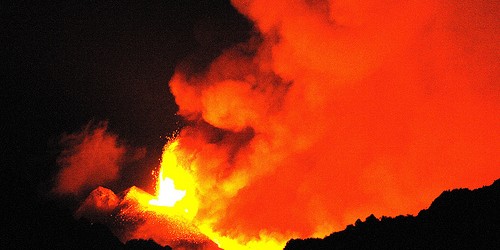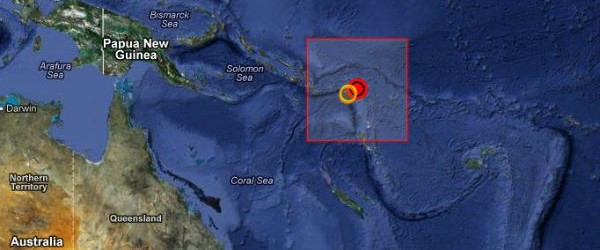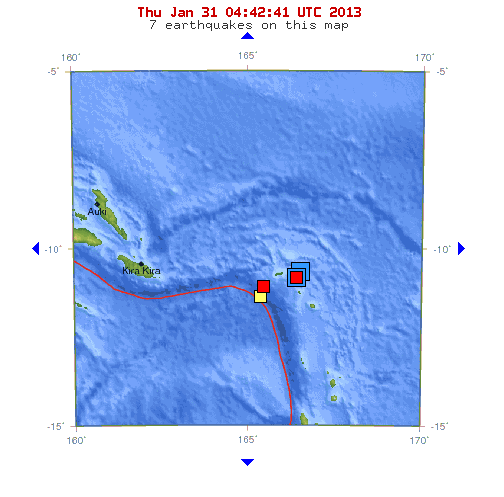January 31, 2013 – SANTA CRUZ ISLANDS – A deep 6.2 magnitude earthquake struck near the Santa Cruz Islands in the Pacific, about four hours after the region was rattled by a 6.0 magnitude earthquake. The 6.2 magnitude earthquake had a depth of 55.4 km (34.4 miles) with an epicenter of 60 km (37 miles) E of Lata, Solomon Islands. This is the third major earthquake to strike the planet in a 24 hour period.
The planet is experiencing a heightened level of seismic activity following a record number of volcanoes across the globe exhibiting activity in the month of January. Today’s earthquake was followed in rapid succession by two 5.6 aftershocks, and a 5.0 magnitude earthquake in southern Sumatra, Indonesia, and a 4.5 aftershock in Atacama, Chile from the 6.8 magnitude earthquake. Seismic tension is also mounting on the Indo-Australian and Sunda plate near the region of Indonesia. –The Extinction Protocol






 January 31, 2013 – CHILE – A magnitude-6.8 earthquake shook offices, toppled supermarket shelves and broke windows on Wednesday in north-central Chile, where people fled some buildings in panic. A 55-year-old woman in city of Atacama died of a heart attack, said Mayor Rafael Prohens, who attributed her death to fear during the quake. Authorities said that damage was limited and discounted the possibility of a tsunami. The U.S. Geological Survey originally reported the quake at 6.7, but later revised it upward. It struck at 4:15 p.m. (3:15 p.m.; 2015 GMT) and was centered 27 miles (44 kilometers) north of Vallenar, Chile. The quake shook the capital of Santiago, causing office buildings to sway, but was felt most powerfully in the north where state television showed images of scattered groceries at supermarket floors and broken windows at several homes in Vallenar, Copiapo and other nearby cities.
January 31, 2013 – CHILE – A magnitude-6.8 earthquake shook offices, toppled supermarket shelves and broke windows on Wednesday in north-central Chile, where people fled some buildings in panic. A 55-year-old woman in city of Atacama died of a heart attack, said Mayor Rafael Prohens, who attributed her death to fear during the quake. Authorities said that damage was limited and discounted the possibility of a tsunami. The U.S. Geological Survey originally reported the quake at 6.7, but later revised it upward. It struck at 4:15 p.m. (3:15 p.m.; 2015 GMT) and was centered 27 miles (44 kilometers) north of Vallenar, Chile. The quake shook the capital of Santiago, causing office buildings to sway, but was felt most powerfully in the north where state television showed images of scattered groceries at supermarket floors and broken windows at several homes in Vallenar, Copiapo and other nearby cities. 


